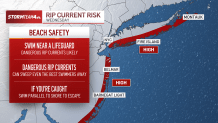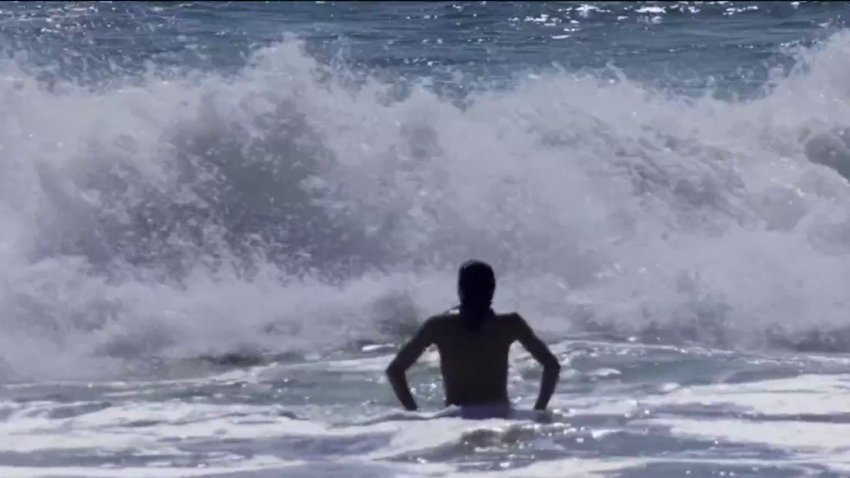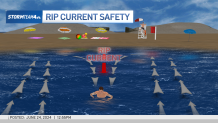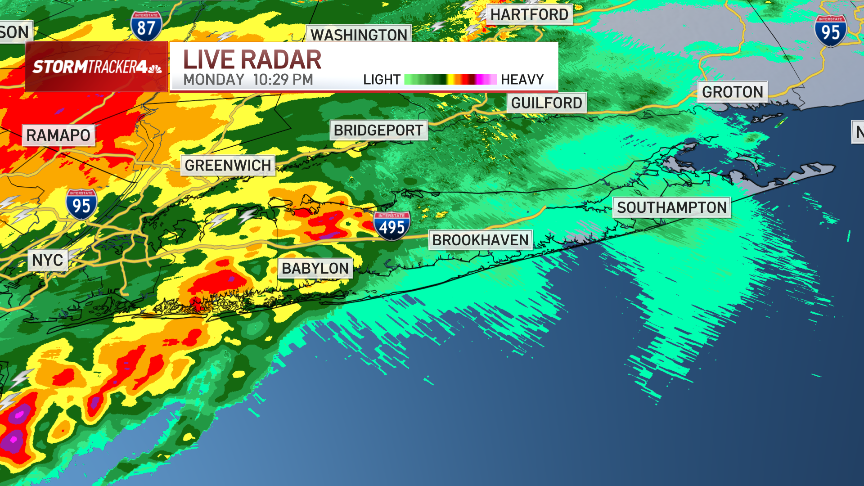Strong rip currents were reported along the South Shore of Long Island as a heat wave grips the tri-state. NBC New York’s Pei-Sze Cheng reports.
Summer swelter picks up on Wednesday as humidity creeps back into the picture.
And for the most part, it will be an ideal day at the beach. But pay close attention if you plan to dip your toes in the water. Rip current risks will be high on most beaches in New York City and on the south shore of Long Island, thanks to a strong southwest wind. There will also be a moderate risk for rip currents along the Jersey Shore.

Watch NBC 4 free wherever you are

Get Tri-state area news delivered to your inbox with NBC New York's News Headlines newsletter.

Weather Stories
What causes rip currents
Wave heights are a key factor in determining the potential for rip current development. For all New York beaches, five-foot waves on Monday made swimming risky. At the Jersey Jersey Shore, waves were between two and four feet.
Don’t let wave heights fool you, though. It is a common misconception that dangerous rip currents only occur on stormy days when waves are large. Rip currents can develop on fair weather days when waves are as low as two feet.

Wind direction impacts rip current formation, too. Onshore winds are particularly dangerous because they pile water onto the shore. That excess water has to flow back out to sea somehow. A rip current, the narrow channel of water flowing back out to sea, is the mechanism for that to happen.
Tides also play a key role in potential rip current development. Rip currents are more likely during low tide, when waves are breaking over sand bars. Exercise extreme caution at low tide for this reason.
There are multiple factors that make rip currents likely. The most important thing you can do if you plan to visit the beach and swim is to swim near a lifeguard. Wear brightly colored clothing so that you are very visible.

What to do if caught in a rip current
If you get caught in a rip current, do not try to swim against the pull; this will only tire you out.
Rip currents are strong and fast, capable of pushing you out much faster than you can swim. The best thing to do is remain calm, stay afloat and let the rip current pull you out.


The current usually weakens once it gets beyond the breaking waves. At that point, you can swim parallel to the shoreline and get yourself out of the current.
And if you see someone else caught in a rip current, the best thing you can do for them is alert a lifeguard. Never attempt to go in the water yourself.



